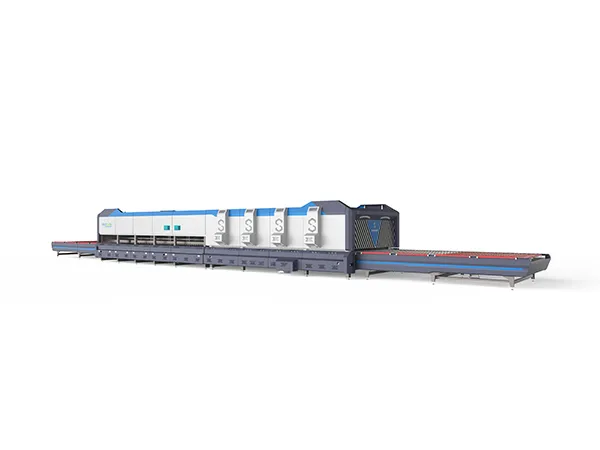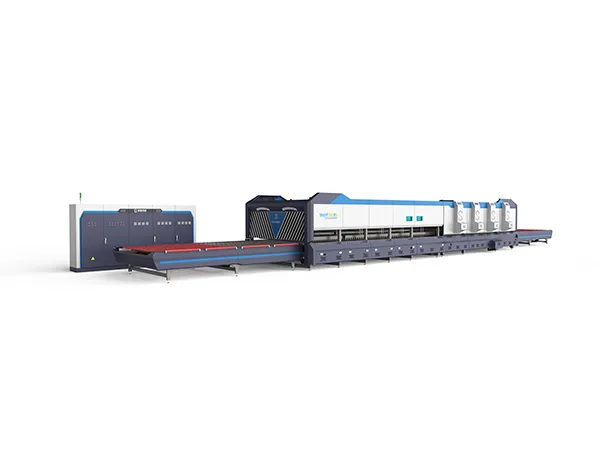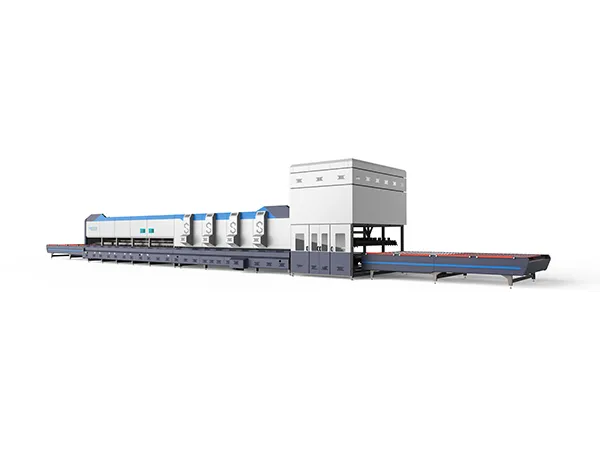Glass tempering furnace is an industrial heating equipment specially used for tempering glass. In the glass processing industry, 300Kw is a common power specification. In addition, these equipment also have a specific processing size range, with a minimum processing size of 1010mm and a maximum processing size of 28002000*2500mm, which is suitable for glass processing needs of various sizes.
The power requirements for a glass tempering furnace can vary widely depending on the size, design, and production capacity of the furnace.
Glass tempering furnace power

Small-Scale Furnaces
Designed for smaller production capacities or specialized applications.
Power consumption: Generally ranges from 100 kW to 300 kW.
Medium-Scale Furnaces
Used in medium-sized production facilities.
Power consumption: Typically ranges from 300 kW to 1 MW (1000 kW).
Large-Scale Furnaces
Used in large industrial facilities for high-volume production.
Power consumption: Can range from 1 MW to several megawatts, depending on the specific requirements.
Factors affecting glass tempering furnace power

Furnace Design
Heating Elements: Type and quality of heating elements (electric resistance heaters, gas burners, etc.) impact the furnace's power.
Insulation: Efficient insulation reduces heat loss and improves energy efficiency.
Airflow System: Properly designed airflow ensures uniform heating and cooling.
Glass Type and Thickness
Material Composition: Different glass compositions have varying heat absorption and distribution properties.
Thickness: Thicker glass requires more power to reach the necessary tempering temperature.
Heating Temperature
Target Temperature: Typically around 600-620°C (1112-1148°F) for tempering glass. Higher temperatures may require more power.
Temperature Uniformity: Consistent temperature throughout the furnace ensures even tempering.
Cycle Time
Heating Duration: The time needed to heat the glass to the tempering temperature.
Cooling Rate: Rapid cooling (quenching) is essential for creating the tempered glass properties.
Load Size and Configuration
Batch Size: Larger batches may require more power and longer cycle times.
Glass Arrangement: Proper spacing and arrangement ensure efficient heat distribution.
Furnace Capacity and Scale
Size of the Furnace: Larger furnaces with higher capacities may require more power.
Production Scale: High-production furnaces are designed for continuous operation and efficiency.
Energy Source
Electricity vs. Gas: The choice of energy source affects power consumption and efficiency.
Energy Efficiency: Modern furnaces are designed to maximize energy efficiency, reducing overall power consumption.
Control Systems
Temperature Control: Precise control systems maintain consistent temperatures, enhancing efficiency.
Automation: Advanced automation systems optimize the tempering process and reduce energy waste.
Maintenance and Condition
Regular Maintenance: Well-maintained furnaces operate more efficiently.
Component Condition: Worn or damaged components can reduce efficiency and increase power consumption.
Environmental Conditions
Ambient Temperature: The surrounding temperature can impact the furnace's energy requirements.
Ventilation: Proper ventilation ensures optimal furnace performance and energy efficiency.
Considering these factors can help optimize the power consumption and efficiency of a glass tempering furnace, leading to better quality tempered glass and lower operational costs.









